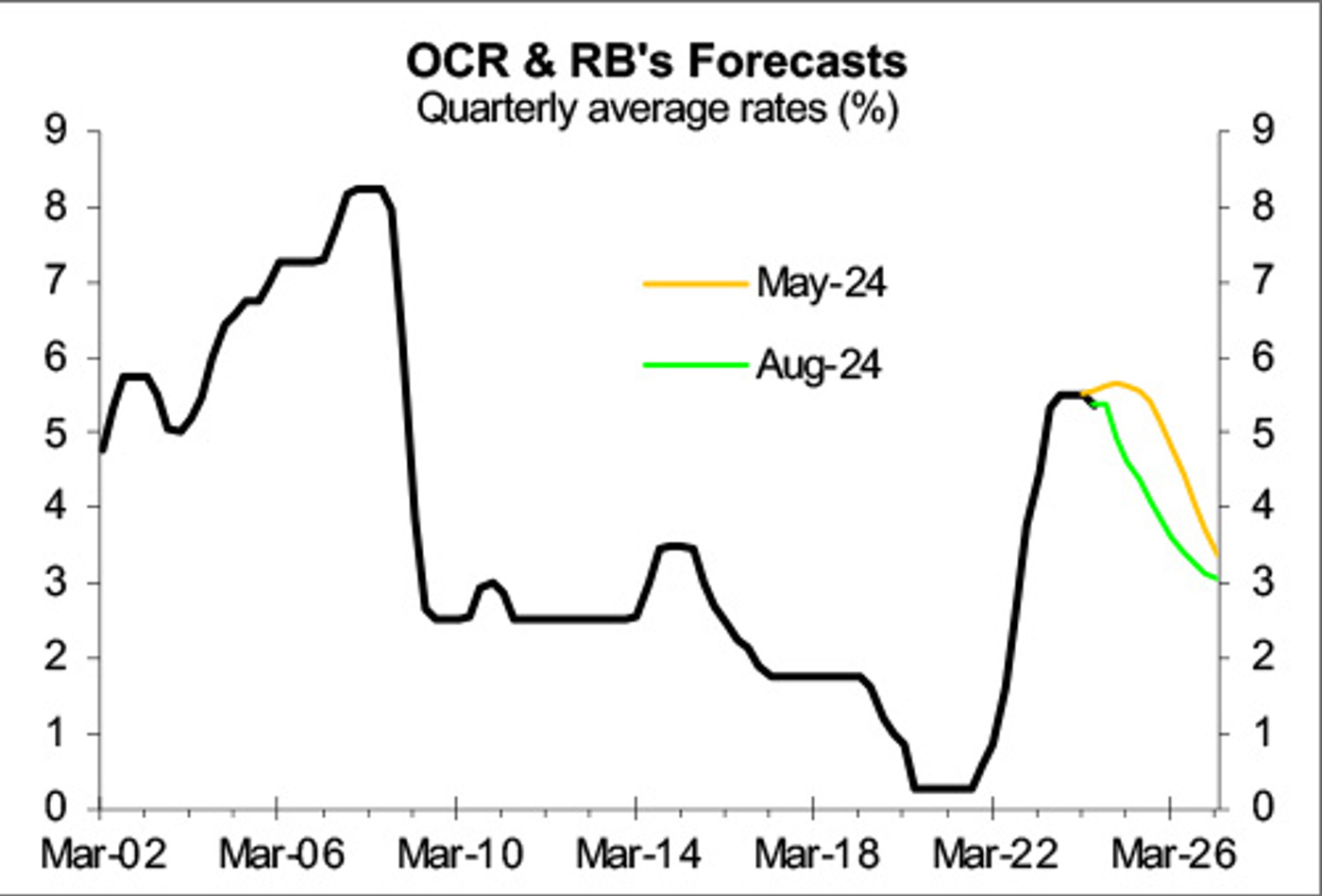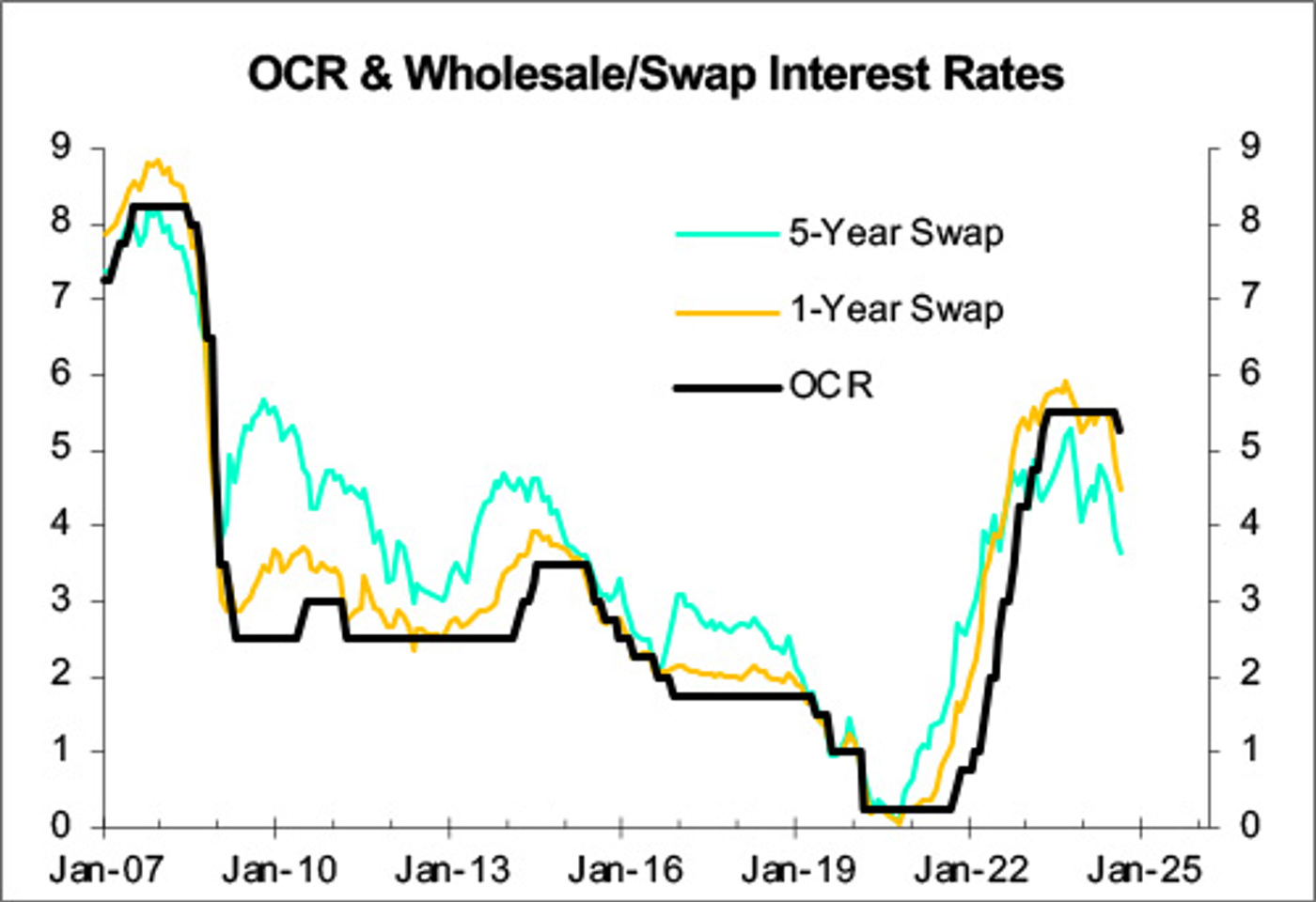
With new dwelling consents having fallen dramatically since 2022, economic times have been tough. The worst is not yet over, but falling rates are the key to recovery...
![]()
The Reserve Bank (RB) has belatedly realised the economic pain from the sharpest ever rise in interest costs is much worse than it expected. In response, it cut the OCR last month and is signalling further cuts (green line, first chart). In May, it predicted one more hike and no cuts before next year (gold line).
There were clear signs economic growth would be significantly worse than the RB expected. New dwelling consents have fallen dramatically since 2022, job ads started falling sharply early last year, and monthly retail spending on cards started falling sharply in February.
The RB has acknowledged it was well off the mark in May. The “hawkish” stance it adopted in May slow down attempts by the money market to drive down interest rates, but the floodgates have started to open.
The money market is quicker at assessing economic growth prospects than the RB. Wholesale or swap interest rates normally move ahead of the OCR as shown for one-year and five-year rates in the second chart. The fall in swap rates is now flowing to bank mortgage and deposit rates.
At any point the one-year swap rate reflects what the money market expects the OCR to be over the next year and the five-year swap rate what the market expects it to be over the next five years. By predicting no fall in the OCR until next year in May, the RB slowed the fall in the five-year swap rate but effectively stopped a fall in the one-year rate. It slowed down the market-led fall in May when there was good reason it should not have.
The RB having realised its mistake has opened the door to the market driving down short-term wholesale rates like the one-year swap rate ahead of planned OCR cuts as well as allowing other wholesale rates to fall more.
It takes around the year for economic growth to fully reflect changes in interest rates and more than another year for it to be reflected in inflation. Fallout from the tail-end of the increase in interest rates in 2023 will continue to filter through for a while, including for new dwelling consents that probably face a bit more downside in H2 2024 before starting to recover next year.
The negative economic news should continue over H2 2024, fuelling the market-led fall in interest rates, subject in part to global developments that have recently helped drive the fall. This implies the case for a recovery in residential building should intensify over 2025 and heading into 2026.


For more information on the Reserve Bank's August OCR cut decision see: Interest.co.nz article & podcast
![]()

